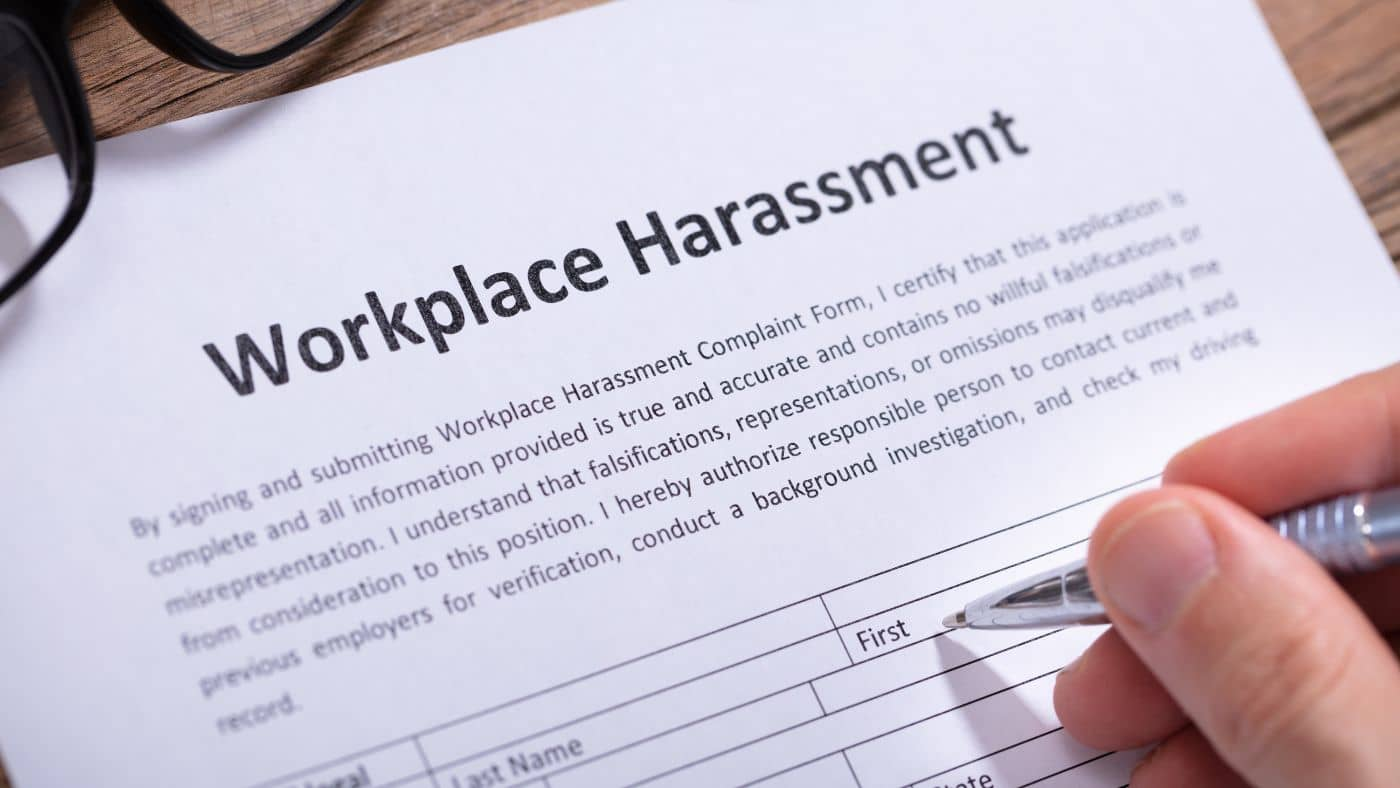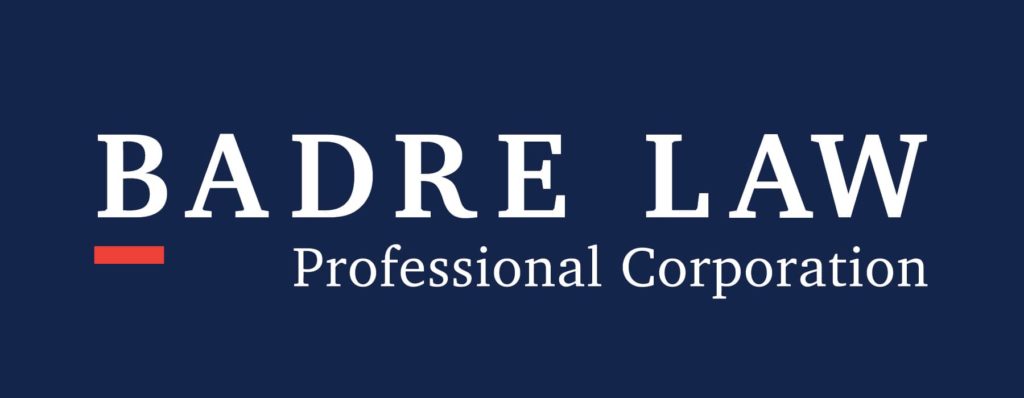Workplace harassment, also known as work harassment, is an issue that affects countless employees, hindering their productivity and well-being. Recognizing the signs of harassment and understanding how to respond is crucial for fostering a safe and inclusive work environment. This blog post delves into the various forms of work harassment, the legal framework to protect employees, and the steps to take when confronted with harassment. We can all contribute to a healthier, more positive work environment by understanding this critical issue more deeply.
Short Summary
Understanding workplace harassment is essential to create a safe and productive work environment.
Employers must recognize various forms of harassment, such as verbal, psychological, digital, physical and sexual abuse.
An employment lawyer provides legal advice on how to prevent and address workplace bullying in order to ensure compliance with the law.
Understanding Workplace Harassment

Workplace harassment takes many forms, including workplace sexual harassment, which can involve:
Verbal abuse
Unwanted sexual advances
Bullying
Discrimination
Intimidation
Offensive jokes or comments
Physical assault
These actions can have a detrimental impact on an individual’s productivity, comfort, and safety at work.
It is essential to recognize the different types of harassment to effectively address the issue and ensure a safe workplace for all employees.
Types of Workplace Harassment
Workplace harassment can be:
Verbal: offensive language or conduct aimed at provoking anger or irritation, such as aggressive, abusive, or intimidating statements
Psychological: psychological harassment, including intimidating or manipulative behaviour that causes psychological trauma to the targeted individual
Digital: harassment through electronic communication, such as cyberbullying or online stalking
Physical: physical acts of aggression or violence
Sexual: unwanted sexual advances, comments, or behaviour that may constitute harassment
Digital harassment occurs through online platforms, such as inappropriate emails, offensive comments, or sharing embarrassing photos or videos. Physical harassment involves actions like unwanted touching, pushing, or obstructing someone’s path. Emotional harassment can also take place in various forms, causing distress to the targeted individual. Sexual harassment encompasses unwanted sexual advances, inappropriate remarks about someone’s appearance, or making sexual jokes.
By understanding these various forms of harassment, employees and employers can take appropriate action to address and prevent their occurrence in the workplace.
Offensive Conduct and Unwanted Advances
Offensive conduct can include discriminatory comments, offensive jokes, and inappropriate touching. It is essential to recognize these behaviours, as they can create a hostile work environment and cause significant distress to the targeted individual.
When experiencing or witnessing offensive conduct, it is crucial to take action. Document the incident and notify the relevant supervisor or human resources department. By addressing these behaviours promptly, employees and employers can foster a healthier, more inclusive work environment.
The Legal Framework: Prohibiting Discrimination and Protecting Employees

The legal framework that prohibits discrimination and safeguards employees from workplace harassment consists of federal and state laws. These laws aim to protect workers from harassment and discrimination based on characteristics such as race, sex, and national origin.
Employers are obligated to:
Prepare policies on workplace violence and harassment, ensuring they align with what a reasonable person would expect
Review them annually
Provide written policies in workplaces with six or more regularly employed workers
These policies are crucial in ensuring a safe and harassment-free work environment for all employees.
Employment Lawyer’s Role
Employment lawyers play a significant role in assisting both employees and employers in navigating workplace harassment issues. They provide legal advice and support throughout the process, ensuring compliance with the law and protecting the rights of employees.
For example, Ottawa employment lawyers can provide guidance on Canadian workplace harassment laws and help clients navigate the legal process in the Ottawa region. By seeking the assistance of an experienced employment lawyer, employees can better understand their rights, report workplace harassment, and ensure a fair resolution to their cases.
Identifying Signs of Workplace Bullying and Violence

Workplace bullying and violence can manifest in various forms, such as aggressive behaviour, threats, and intimidation. Identifying these signs is crucial for employees, as it allows them to take appropriate action to protect their well-being and ensure a safe work environment.
Employers also play a vital role in addressing workplace bullying and violence. They can take the following steps to prevent and address these issues in the workplace:
Review and update workplace policies
Provide proper training on respectful behaviour and conflict resolution
Foster a culture of respect and zero tolerance for bullying and violence
By implementing these measures, employers can create a safe and healthy work environment for their employees.
Physical Violence and Assaults
Physical violence in the workplace can include actions such as:
hitting
punching
kicking
pushing
restraining someone physically
Physical assaults, a form of physical violence, can occur in various contexts, including workplace harassment. Recognizing these actions is essential for employees, as it allows them to report incidents and protect themselves from harm.
Reporting physical violence is crucial in ensuring the safety of the victim and holding the perpetrator accountable for their actions. By documenting incidents and reporting them to the appropriate authorities, employees can help prevent future occurrences of violence in the workplace.
Creating and Implementing a Workplace Harassment Policy
A comprehensive workplace harassment policy is a vital tool in preventing and addressing incidents of workplace harassment. Such policies should outline procedures for reporting harassment and measures to prevent and address incidents. By establishing and implementing a robust workplace harassment policy, employers can create a safer and more inclusive work environment for all employees.
Training and support for employees are essential components of an effective workplace harassment policy. By providing employees with the necessary tools and resources to recognize and report harassment, employers can ensure that their workforce is informed, empowered, and capable of addressing these issues in the workplace.
Addressing Sexual Orientation and Gender Identity

Workplace harassment policies should also address sexual orientation and gender identity to ensure an inclusive and supportive environment for all employees. By accommodating diverse sexual orientations and gender identities, employers can foster a culture of respect and understanding, promoting a healthy and positive work environment.
Implementing policies and procedures that specifically address harassment based on sexual orientation and gender identity can help protect employees from discrimination and create a more inclusive and supportive work environment. By doing so, employers demonstrate their commitment to fostering a safe and positive work environment for all employees, regardless of their sexual orientation or gender identity.
Reporting and Responding to Work Harassment

Reporting and responding to work harassment is crucial in addressing the issue and preventing future incidents. When experiencing or witnessing harassment, employees should take appropriate action, such as documenting the incident and informing their supervisor or human resources department. Timely reporting is essential, as it enables the problem to be efficiently dealt with and prevents it from escalating.
Employers must also take appropriate action when receiving reports of harassment. This can include conducting investigations, providing support to the affected employees, and implementing corrective actions as necessary. By taking these steps, employers can demonstrate their commitment to addressing harassment and fostering a safe and inclusive work environment.
Seeking Assistance from an Employment Lawyer
In some cases, seeking assistance from an employment lawyer may be necessary to ensure a fair resolution to workplace harassment issues. Employment lawyers can provide guidance on employees’ rights, help navigate the reporting process, and ensure that the appropriate steps are taken to address the issue.
For example, Ottawa employment lawyers can provide guidance on Canadian workplace harassment laws and assist clients in navigating the legal process in the Ottawa region. By consulting an experienced employment lawyer, employees can better understand their rights, report workplace harassment effectively, and ensure a satisfactory resolution to their case.
Promoting Workplace Health and Positive Environment

Promoting a healthy and positive work environment is essential for employee well-being and overall workplace success. Some ways to achieve this include:
Open communication
Training
Providing resources
Fostering a culture of respect and inclusivity
These measures can help employees feel safe and supported in their work environment.
Business leaders play a critical role in promoting workplace health by setting the tone for a positive work environment and demonstrating their commitment to addressing harassment and discrimination. By actively working to create a healthy and inclusive workplace, employers can not only improve employee well-being but also enhance productivity and performance.
Summary
In conclusion, recognizing and responding to workplace harassment is essential for fostering a safe, healthy, and inclusive work environment. By understanding the various forms of harassment, implementing comprehensive policies, and promoting open communication and training, employers and employees can work together to address and prevent workplace harassment. By taking these steps, we can all contribute to a more positive and supportive work environment for everyone.
Frequently Asked Questions
Which is an example of workplace harassment?
Workplace harassment can take many forms, such as making derogatory jokes, using racial slurs, expressing intolerance towards certain races, and intimidating employees through threats.
These behaviours can have a serious impact on the workplace environment, leading to decreased morale, increased stress, and a lack of trust between employees and management. It is important for employers to take steps to prevent and address workplace harassment, as it is harmful to employees.
How do you prove harassment?
To prove harassment, it is important to document all contact with the harasser and make regular reports to the police. This evidence could include a witness or verifiable written records, emails, texts, photographs or other documents.
A claimant must then be able to show a human rights tribunal that there appears to be a contravention of the Code on a “balance of probabilities”.
What qualifies as harassment in Canada?
Criminal harassment, commonly known as stalking, which includes repeatedly following, communicating with or watching over one’s dwelling home, is considered harassment in Canada and is not tolerated under the law.
Such behaviour is not a sign of love but rather an abuse of power.
What is psychological abuse at work?
Psychological abuse at work is an issue of employee exploitation that includes regular embarrassment in public or in front of co-workers, calling names, and threatening to harm people who are important to the worker. It is a misuse of power and control that violates the worker’s right to psychological safety.
What is the role of an employment lawyer in workplace harassment cases?
An employment lawyer’s role in workplace harassment cases is to provide the necessary legal assistance to initiate the case and guide the victim throughout the process.
They can help the victim understand their rights and the legal options available to them and provide advice on how to proceed with the case. They can also represent the victim in court if necessary.

